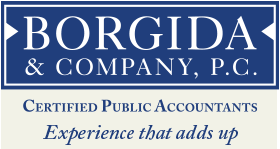The health-care reform legislation that was recently signed into law contains a number of tax changes. Some of these changes take effect immediately; others won’t have an impact for a few years. Here’s a year-by-year breakdown of some of the changes worth taking note of.
Changes taking place in 2010
Bad news if you frequent tanning salons–after July 1, 2010, there will be a new 10% tax assessed on amounts paid for indoor tanning services.
Good news for adoptive parents, though–the maximum tax credit for qualified adoption expenses, and the maximum amount of employer-provided adoption assistance that can be excluded from income, each increase from $12,170 to $13,170. The tax credit is also made refundable. These changes are effective for 2010 and 2011, with an adjustment for inflation in 2011.
In addition, if you’re covered by an employer health plan, the tax benefits (i.e., the ability to exclude the value of the benefits from income) associated with the health coverage and any reimbursements you receive for medical care expenses are extended to any children who have not reached age 27 by the end of the year. Similarly, self-employed individuals can deduct the costs associated with health-care coverage for any child who doesn’t reach age 27 by year-end.
2011 through 2013
If you have a flexible spending arrangement (FSA), health reimbursement arrangement (HRA), health savings account (HSA), or Archer MSA, it’s important to note that, beginning in 2011, over-the-counter medications (except for insulin and medications that are prescribed by a physician) will no longer be considered qualified medical expenses for purposes of reimbursement and tax-free distributions. And, starting in 2011, the additional tax that applies to HSA and Archer MSA distributions that aren’t made for qualifying expenses increases to 20%. In 2013, health FSAs that are part of a cafeteria plan will be capped at a $2,500 reimbursement limit.
Do you itemize your deductions on Schedule A? For many it’s going to get a little more difficult in 2013, when unreimbursed medical expenses will be deductible on Schedule A only to the extent that they exceed 10% of adjusted gross income (AGI), instead of the 7.5% threshold that applies now. Until 2017, however, if you or your spouse turns age 65 before the end of the taxable year, the 7.5% AGI threshold will continue to apply. Beginning in 2017, the 10% AGI threshold will apply to individuals who have reached age 65 as well.
Also in 2013, two new Medicare-related taxes will affect high-income individuals. Those with wages over $200,000 (married couples filing jointly with wages over $250,000) will be subject to an additional 0.9% hospital insurance (Medicare) payroll tax. A new 3.8% Medicare contribution tax will also be imposed on the unearned income of individuals with AGI over $200,000, or married couples filing jointly with AGI over $250,000.
2014
This is the year of the carrot and the stick. A new premium assistance tax credit will help eligible individuals purchase health-care insurance through one of the newly established state exchanges. If you qualify for the credit, it will be paid directly to the exchange insurance plan that you join. Who qualifies? Individuals with household income between 100% and 400% of the federal poverty level will qualify, with the exact amount of the credit based on income level. Generally, individuals who are offered coverage through an employer health plan won’t qualify for the credit unless the employer health plan doesn’t cover an adequate share of benefits (60%), or it’s considered “unaffordable” (the employee portion of the premium is 9.5% or more of the employee’s household income).
In addition to a premium assistance tax credit, those with household income between 100% and 400% of the federal poverty level may qualify for a cost-sharing subsidy to help cover out-of-pocket costs like co-payments and deductibles, when they buy health insurance through an exchange. Like the tax credit, the subsidy will be paid directly to the plan.
And then there’s the stick. Beginning in 2014, if you’re a U.S. citizen or legal resident, you’re generally required to have adequate health-care coverage. If you don’t, you’ll face a penalty tax. In 2014, the tax will equal the greater of 1% of the amount of your household income that exceeds a specific amount (generally, the standard deduction plus personal exemption amounts you’re entitled to for the year), or $95 per uninsured adult (half that for uninsured family members under age 18), with a maximum household penalty of $285. By 2016 the percentage rate increases to 2.5%, the dollar amount per uninsured adult increases to $695, and the maximum household penalty increases to $2,085.
Aaron L. Johnson, CPA



Found your site on del.icio.us today and really liked it.
I ve been reading along for a while now. I just wanted to drop you a comment to say keep up the good work.
Great blog! much appreciated.